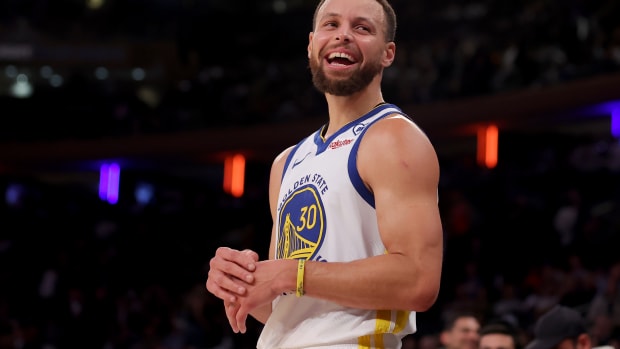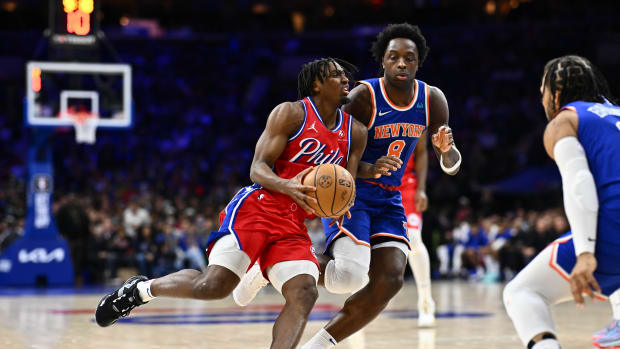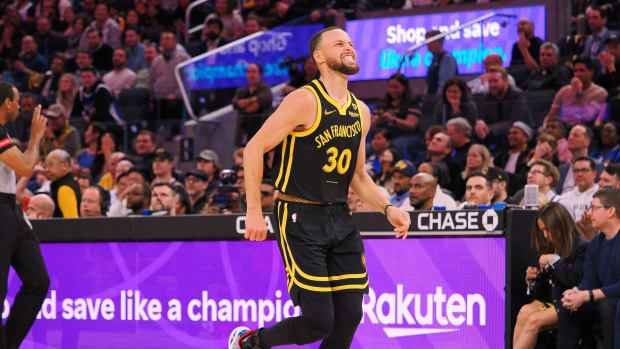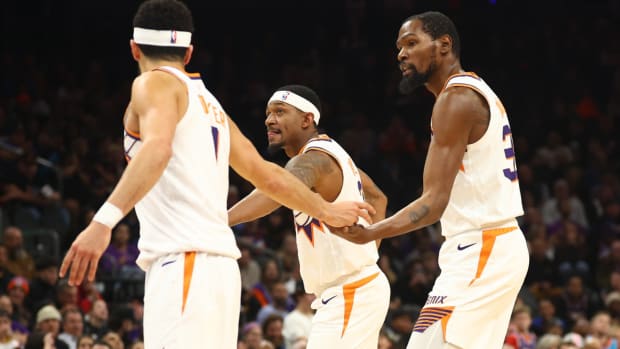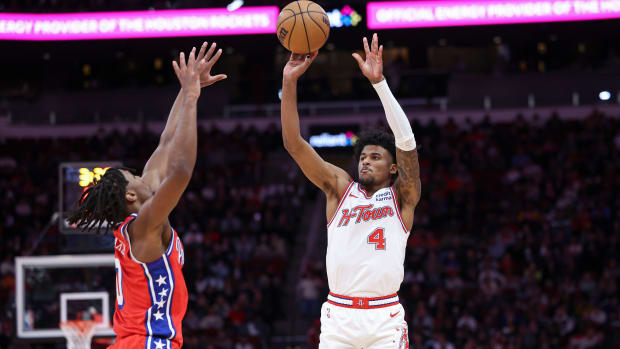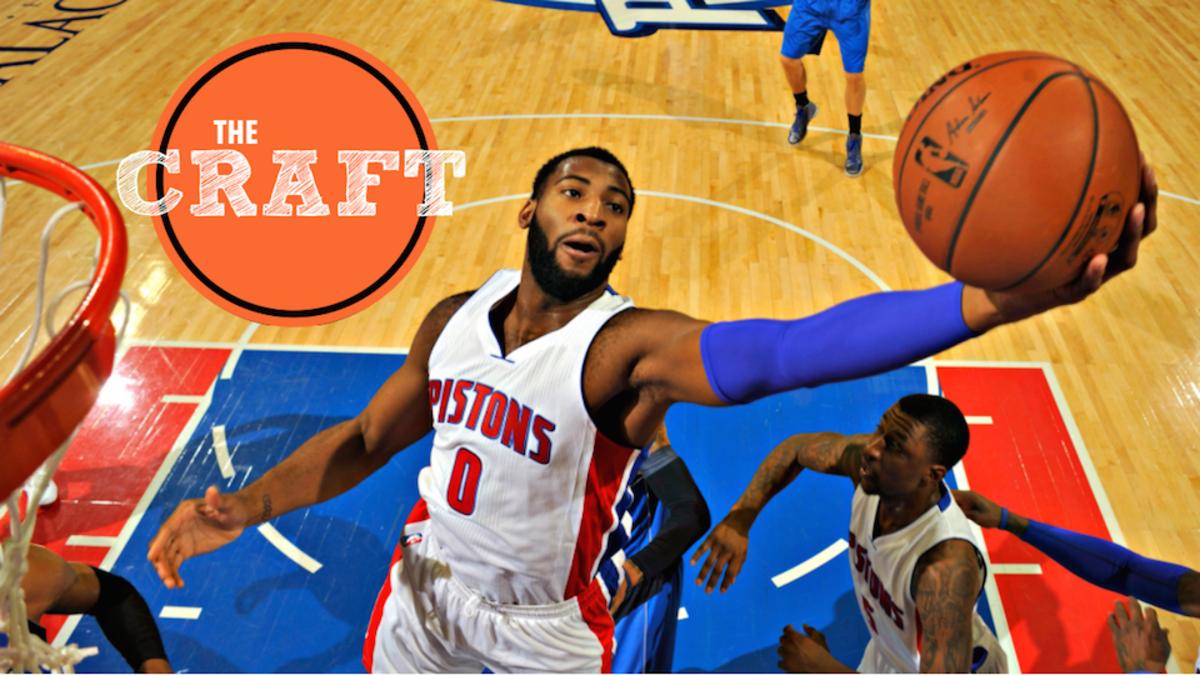
The Craft: Rise of Andre Drummond
Welcome to The Craft, a serial look inside the world of player development in the NBA. Check out the first installment from last month, profiling Tyson Chandler.
Andre Drummond, all of 21 years old, is a basketball terror. Rare are those games in which he lines up against a physical equal. Those strong enough to combat Drummond's size tend to lose track of him in space, while those quick enough to keep up find themselves overwhelmed the nearer he gets to the rim. Drummond's activity level thus demands awareness from every opponent on the floor. Anything less surrenders lobs and rebounds freely to a young star -- albeit an unfinished one -- eager to take them. There are centers in the NBA capable of summoning the kind of force that can change a game. Drummond, though, seems to exude it naturally – if for no other reason than his hard work is enough to exploit every advantage.
This has essentially been the case since Drummond's first days in the league. As a 19-year-old rookie he averaged 13.8 points, 13.2 rebounds, and 2.8 blocks per 36 minutes despite the lack of consistent playing time or full confidence from his coach. In this, Drummond's third season, those numbers have swelled to 15.1 points, 15.8 rebounds, and 2.1 blocks over the same interval. No player in the league grabs rebounds at a more prolific rate.
"Every time I see a shot go up, it's like a pass to me," Drummond said. "Guys focus on points and getting assists. My goal is to go out and get 20 rebounds a night."
Impressive though his statistical output may be, understanding the full weight of his improvement to this point requires an appreciation of the opposing forces at work. The progress of a young player is so often reduced to basic, relatable terms: effort, focus, confidence. Those matter greatly. Yet any player who experiences consistent success in the NBA must also grapple with the weight of the league's tactical response. The better a player gets, the more dedicated opposing coaches and players become in counter.
• THE FUNDAMENTALS: Pistons waiting on Drummond (11.24.14)
Drummond came to work against this very pressure as opponents have increasingly loaded up the paint against his rolls to the rim – the pillar of his highly efficient game:
"At the end of my second year, teams really started figuring out how good I am in the pick-and-roll," Drummond said. "They'd sag off our point guards knowing that they were looking to get me the ball. I felt like if I developed a post game, they would have to defend me in both areas and on the lobs, too."
Such is the natural, weighty response to the single most devastating threat on an opposing team. Drummond proved to be so successful in rolling to the rim that he warped the defensive game plan of Detroit's opponents. In turn, he spurred his own development. With the denial of one avenue for scoring comes the exploration of other, less fluent means.
Why Pistons are likely playoff-bound and why Thunder may miss out
Drummond has no delusions of being a high-usage option on offense. He simply aspires to work from the post as a means to diversify. Some might use a back-to-the-basket game to gun for 20 points a night. For Drummond, it's simply a means to push back against the scouting report and keep defenses honest. That process comes in layers, beginning with the elemental.
"Nowadays, everyone wants six, seven different moves," Drummond said. "For me, I'm not primarily a low-post player. I'm a rebounder. I run, block shots, and do all the dirty work. I feel like for me I needed to keep it simple and if I could get three basic moves, then I could use that."
The three moves in question, per Drummond: a basic jump hook off of two crab dribbles, a similar setup leading to a counter spin, and a head-and-shoulder fake to throw defenders off his timing. He credits Pistons assistant Brendan Malone for solidifying his moves, as well as former assistants Roy Rogers and Rasheed Wallace for laying the groundwork. Also involved in Drummond's low-post education is a tutor among his peers: frontcourt counterpart Greg Monroe.
• MORE NBA: Pistons up to No. 15 in latest NBA Power Rankings
"[Monroe] has all the tricks in the world in his game," Drummond said. "He catches me almost nine times out of 10. He makes it hard. He knows that he's not as athletic as I am, so he has all kinds of head and shoulder fakes, up-and-down moves to throw me off to get to the basket. I watch him sometimes to see the things that he does to knock a defender off balance to get to the rim so easily."
Among the moves Drummond has absorbed from Monroe's curriculum: A quick bump into a defender's body that creates an exploitable gap in coverage.
"At the last second before he shoots it, [Monroe] gives the defender one last bump to get him off him, and then he goes right up into him," Drummond said. "So it's either going to be a basket or a foul."
Every little quirk in timing and technique helps. Given that Drummond is so massive and so quick, opponents will be inclined to overplay his every move to compensate. There's potential for Drummond to take advantage of that dynamic with footwork and trickery, though he's very clearly not to the point in his development where he can do so consistently. The confidence is there, as is a fluidity from the block new to Drummond's game. The endorsement of Stan Van Gundy, too, is invaluable. Drummond simply isn't yet hitting a high enough percentage on his hook shots to make his work from the block a more threatening endeavor.
While You Weren't Watching: Stop sleeping on the Atlanta Hawks
Which, in a sense, feeds into the fact that what makes Drummond's future so daunting for other teams around the league is his obvious incompletion. Drummond is working, bit by bit, to resolve the holes in his game. Yet already he creates profound advantage by way of basic skill and productive instinct. How far might a steadier post game take Drummond? What might a bit more balance do for one of the brightest young bigs in the league and, in turn, the Pistons?
These are big questions given the depth of capability involved. How Drummond goes about growing into the next stages of his career will inevitably determine the future of the Pistons and should on some level influence the fate of the Eastern Conference and the entire league. Drummond's ascendant stardom is that obvious and his promise that profound.
For now, Drummond teases his potential through alternating fury and imperfection. The former comes into play much more often than the latter, registering Drummond's play as a substantial net positive overall. The latter is mere evidence of Drummond's work in progress, be it with his forays into the post or endeavors to lead the Pistons defense.
Drummond's place at the heart of Detroit's defense is as crucial as any he's asked to play. The points are nice, and the rebounds fantastic. Where Van Gundy and the Pistons most need Drummond to maximize his potential, though, is in the way he covers the floor and stalls opposing ball handlers. Bigs in the NBA are forced to navigate dozens of pick exchanges over the course of a game, and on every occasion must be prepared to respond accordingly. Learning the particulars of those exchanges takes time.
"When I first came in[to the NBA], guarding the pick-and-roll was definitely the toughest thing for me," Drummond said. He is not alone in the sentiment. There are professional basketball players who go their entire careers without grasping the intricacies of pick-and-roll defense: the variations in approach, the adjustments to personnel, and the chemistry of a learned system. As a rookie, Drummond was thrown headfirst into that world without much practical experience to draw on. It showed in the way he communicated with his teammates on the floor.
"I wasn't much of a talker," Drummond said. "Off the court, I'd talk all day, but when it came to basketball, I wasn't really saying much. I kinda did things with my actions and that didn't work anymore. That's something you can do in high school and in college, but in the NBA you've gotta communicate. Guys are too good to not say anything because they'll beat their man."
The Pistons' solution? Give rookie Drummond a megaphone in practice. Force him to make defensive calls in high volume at high volume until he felt comfortable ordering veterans around.
"I feel like that's what the issue was for me – being younger, trying to tell guys what to do," Drummond said. "But this is a league where everybody is equal here. It doesn't matter what age you are. It just depends on how you play."
At present, Drummond plays well -- but inconsistently -- when it comes to his work in coverage. Exclusive athleticism allows for the erasure of all kinds of mistakes. Still, Drummond will have to improve his positioning on plays like these, where he surrenders an open path to the rim by providing pick-and-roll support at the wrong angle:
There's no easy way to absorb this stuff, save for what Drummond and the Pistons are already doing: Working through scenarios in-game, hammering home scouting reports, and practicing his reads every day.
"We'll do two-on-two pick-and-roll drills for like an hour with the guards and the big men," Drummond said. "If you're not up, there's no help-side defense and you're going to get scored on."
Josh Smith's shaky start on Rockets coincides with Pistons' resurgence
The benefits of that kind of drilling are there, if not quite as consistently as Van Gundy would like. The Pistons alternate their coverage between playing up and dropping back on pick-and-rolls, which requires Drummond to have a functional understanding of both approaches. He's done a solid job of recognizing his specific goals within each, as well as informing his coverage with knowledge of the particular opponents in play. Certain bigs demand quicker recovery and certain guards require prolonged help. Drummond's understanding of those situational considerations has deepened, even if he can still be caught out of position at times.
"If you see LeBron James coming off a pick-and-roll full speed, you've gotta really think twice: Do I really want to get that high? Or do I want to sag off him and let him come to me?" Drummond said. "It's fun to have those types of battles and really guard those great players off of the pick-and-roll.
"You play everybody two or three times a year. That first time you see them, you get to really feel them out. Then, that second time it's, 'Alright. I know what's coming now.' I feel like I've done a better job of just focusing on film and listening to our game plan. Reading up on guys to know which way they like to go and if they like to crossover – if I need to stay that extra second to help my guard get back."
In terms of technique, Drummond has made an effort to more fully commit to a defensive stance when dropping on the pick-and-roll. This is as fundamental as it gets, but Drummond brings a uniqueness even to the basics by way of his menacing wingspan:
"Each year you get better at something new," Drummond said. "The pick-and-roll was definitely one of the biggest things that I worked on. Really getting low, making the guard uncomfortable. Seeing someone out there with a 7-foot-5 wingspan staying out there and trying to guard them makes them think twice about coming towards the rim."
These are the details that define pick-and-roll defense at the highest levels of basketball, and it's Drummond's business to make them intimately familiar. His work will never be finished. There are always new players to study and tendencies to be learned, not to mention the perpetual refinement of Drummond's own internal timing. In the big picture, development is forever.
Yet with his physical gifts and natural instincts, Drummond can wade deeper into the developmental spiral than most. He will always appear to be capable of more, because in some sense he's capable of almost anything. He came into the league ready made as an elite rebounder. Within months he had established himself as one of the game's most dominant finishers. Drummond's explosiveness and length allow for so much more, and it's to his credit that he entrusts his future to the power of detail. There's little glory to be found in such diligence. Through it, though, comes an honest shot at greatness.






























